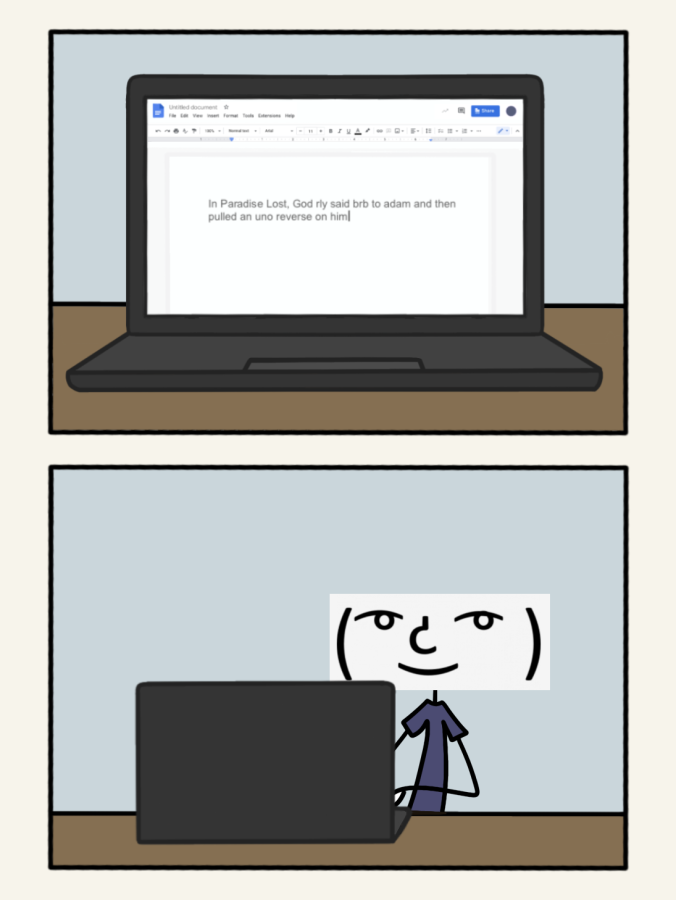Gen Z Shorthand Text: Is it making kids illiterate?
EFFICIENCY IS NOT ALWAYS KEY: Utilizing short-hand text frequently in everyday life can potentially bleed over into academic writing. While it may be comedic, the reader may not be very impressed.
November 1, 2022
Shorthand text is one of the most efficient ways to text people across all devices. Why type out four whole words when you can shorten it to a four-letter acronym? Shorthand allows you to type faster and save time for even more texting. Seems foolproof, right? However, many studies investigate how increased screen time and excessive use of acronyms ultimately worsen a student’s ability to engage in academic papers and identify grammatical errors.
Before going into the potential damages of Gen Z slang and abbreviations, let’s go into the history behind acronyms, and the reasoning behind how it started. According to the websiteThe History Vault, the use of abbreviations also bled into the invention of the telegraph in the 1890s, in which the operator’s language was dictated by the type of telegraph used, leading to shortening words communicated through morse code, due to its use of electricity. With that, pagers being popularized in the 80’s and 90’s allowed for alphanumeric codes communicated from one device to another, further increasing the complexity of slang and abbreviations.
And here we are, now in the present. The most popular shorthand on messaging websites include “LOL,” “WDYM,” “IDK” and “IMO.” In present day use, these abbreviations are used in almost every sentence that is typed out and sent across all platforms. According to a study done by Linkedin, 98% of Gen Z owns a cell phone, with 55% using their cellular device for 5 or more hours a day. Only then can one imagine how many text messages are sent daily, not even including app-to-app messaging. The implementation of abbreviations cycled through online platforms can show how deeply ingrained they can be into an individual, potentially leading to its greater use within an academic setting.
However, different research has shown that some amounts of short-hand text can actually help a student in terms of their academic performance and writing style. An article by The Odyssey Online says that texting provides an outlet for students to become more confident in their writing skills overall, with an individual’s ability to summarize becoming concise. However, this may not be so for examples of handwritten pieces. In research from Learning Lift Off, the use of handwritten work in the classroom does not translate well for those that are easily adapted to the use of text speak across digital devices, with digital tools such as autocorrection services also negatively impacting writing skills, leading to more mistakes within work done with a pencil and paper.
In the end, reducing the negative impacts of academic writing relies on our hands. Simple ways we can prevent the reliance of shorthand abbreviations is through typing out the words itself, and ridding of auto correction on our devices. While this may seem like a difficult transition, it ultimately will allow us to prevent bad habits from forming, and correct our mistakes that may occur in the future.



![AAAAAND ANOTHER THING: [CENSORED] [REDACTED] [BABY SCREAMING] [SIRENS] [SILENCE].](https://thehowleronline.org/wp-content/uploads/2025/06/lucy-1200x800.jpg)





















































